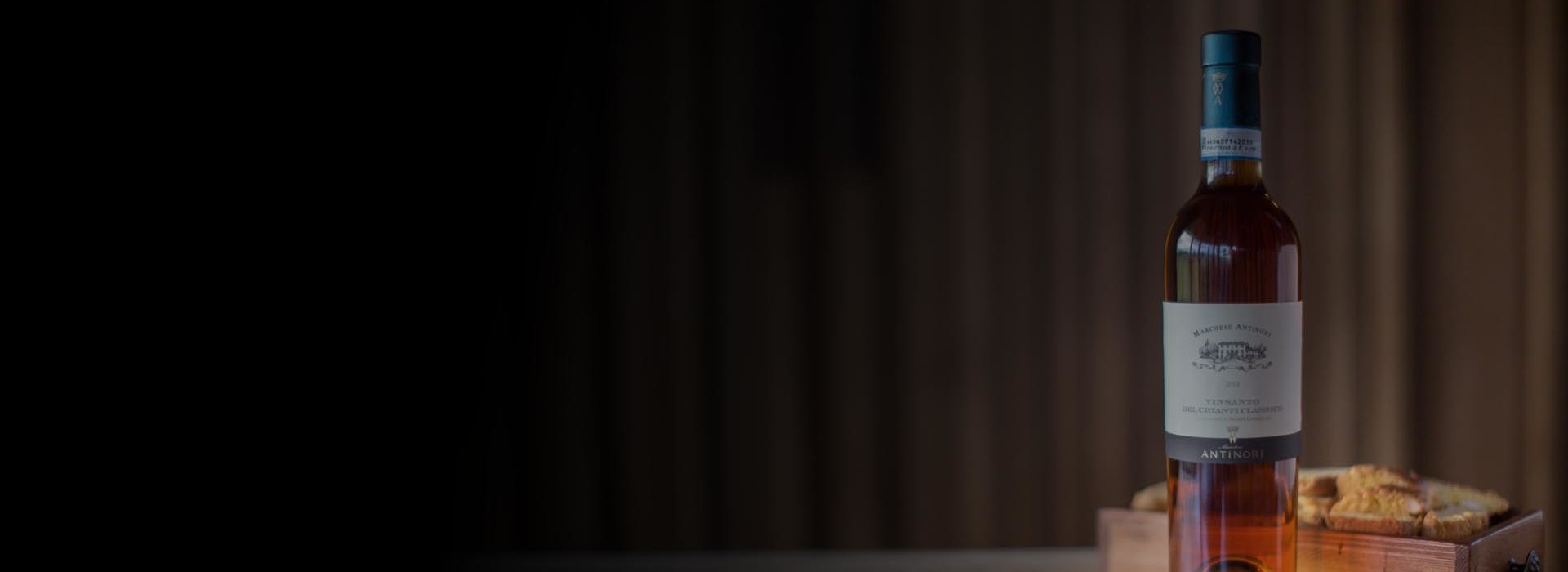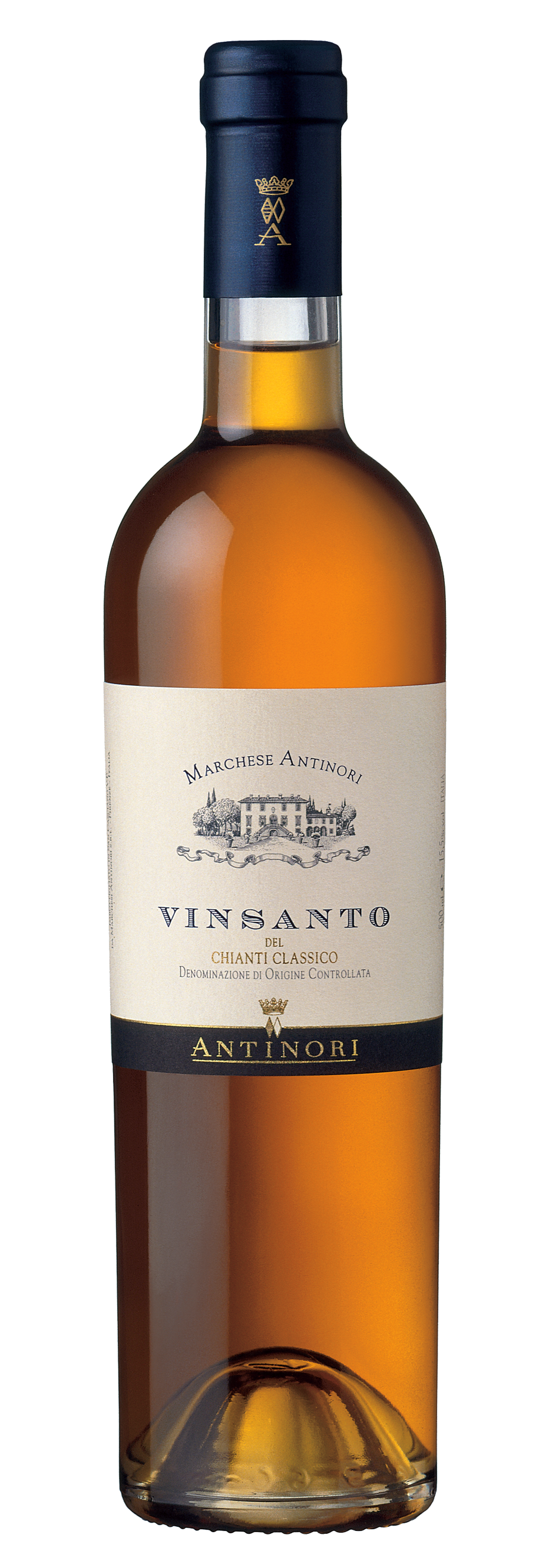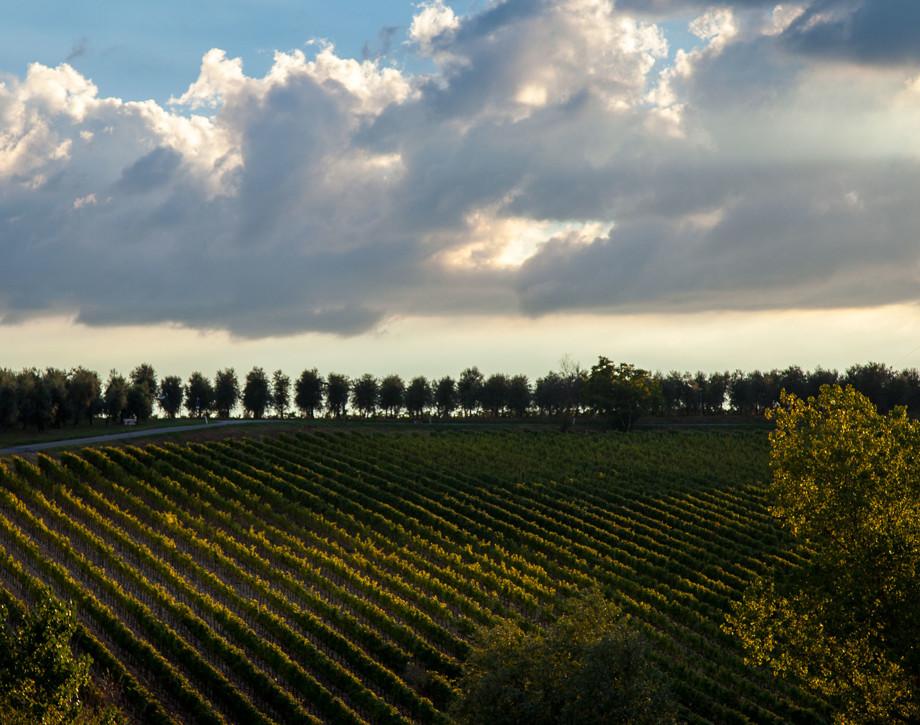Vinsanto Marchese Antinori

Climate
The 2017 vintage will be remembered for the unusual progression of the seasons. Only the month of January registered cold temperatures while the rest of winter was mild prompting early bud break in the vineyards. A cold spell at the end of April caused a slight drop in yields without adversely affecting overall quality. From May throughout the entire month of August, the Chianti Classico region enjoyed hot dry weather with daily temperatures reaching over 30 °C (86 °F). Rain showers during the month of September partially counterbalanced summertime vine stress and provided favorable conditions for optimal ripening of Trebbiano grapes that were harvested between September 13th and 15th.
Fermentation and Aging
Grapes for Vinsanto were harvested exclusively from Antinori estate vineyards in the Chianti Classico region. Clusters were carefully selected in the vineyard and placed into small crates; in the cellar they were laid out manually on bamboo mats in the drying room at the Tignanello estate or hung in suspension in special movable frames at the Pèppoli estate. The grapes were left to desiccate until the end of December then were gently pressed to preserve their aromatic and organoleptic qualities. The must was introduced into small casks called caratelli, coopered with different types of wood in sizes varying from 50 to 200 liters where alcoholic fermentation took place. The fermentation process progressed slowly over a lengthy period of time and was then halted. Vinsanto Marchese Antinori was left to age in the caratelli for about 3 years then blended and bottled.
Historical data
The production of Vinsanto in Tuscany goes all the way back to the Middle Ages and the wine is considered a true regional specialty; the Antinori family has always produced it. The first vintage of the Vinsanto Tenute Marchese Antinori (a “natural” Vinsanto, not a fortified wine with alcohol added) was the 1987.
Tasting notes
Vinsanto Chianti Classico Marchese Antinori is amber in color with golden highlights. On the nose, sweet notes of apricots in syrup, candied oranges, dates, and raisins lead over to hints of chestnut flour, almond paste and amaretto. Dense, soft, and mouth filling on the palate, yet it is sustained by pleasant freshness. The aftertaste, with notes of cocoa powder, give complexity and a lengthy finish.

Vinsanto
Vinsanto production in Tuscany and in the Chianti Classico region dates back to the Middle Ages. Observing traditional methods and strict production regulations, Vinsanto Tenute Marchese Antinori is produced from selected Trebbiano and Malvasia grapes that are left to dry in a completely natural process requiring time and patience. The resulting wine is intense and pleasing for its generous aromas and soft palate.

Climate
The 2017 vintage will be remembered for the unusual progression of the seasons. Only the month of January registered cold temperatures while the rest of winter was mild prompting early bud break in the vineyards. A cold spell at the end of April caused a slight drop in yields without adversely affecting overall quality. From May throughout the entire month of August, the Chianti Classico region enjoyed hot dry weather with daily temperatures reaching over 30 °C (86 °F). Rain showers during the month of September partially counterbalanced summertime vine stress and provided favorable conditions for optimal ripening of Trebbiano grapes that were harvested between September 13th and 15th.
Fermentation and Aging
Grapes for Vinsanto were harvested exclusively from Antinori estate vineyards in the Chianti Classico region. Clusters were carefully selected in the vineyard and placed into small crates; in the cellar they were laid out manually on bamboo mats in the drying room at the Tignanello estate or hung in suspension in special movable frames at the Pèppoli estate. The grapes were left to desiccate until the end of December then were gently pressed to preserve their aromatic and organoleptic qualities. The must was introduced into small casks called caratelli, coopered with different types of wood in sizes varying from 50 to 200 liters where alcoholic fermentation took place. The fermentation process progressed slowly over a lengthy period of time and was then halted. Vinsanto Marchese Antinori was left to age in the caratelli for about 3 years then blended and bottled.
Historical data
The production of Vinsanto in Tuscany goes all the way back to the Middle Ages and the wine is considered a true regional specialty; the Antinori family has always produced it. The first vintage of the Vinsanto Tenute Marchese Antinori (a “natural” Vinsanto, not a fortified wine with alcohol added) was the 1987.
Tasting notes
Vinsanto Chianti Classico Marchese Antinori is amber in color with golden highlights. On the nose, sweet notes of apricots in syrup, candied oranges, dates, and raisins lead over to hints of chestnut flour, almond paste and amaretto. Dense, soft, and mouth filling on the palate, yet it is sustained by pleasant freshness. The aftertaste, with notes of cocoa powder, give complexity and a lengthy finish.

The Specialties Of The Chianti Region
Chianti Classico is the heart of Tuscany not only from a geographical perspective but also due to its historical and cultural importance, its traditions and for its strikingly beautiful territory. Chianti Classico is home to Marchesi Antinori’s historic estates, a family of winemakers since 1385 who have always been passionate about their ancestral territory. The specialty products produced by Antinori, brandy, grappa, Vinsanto, extra virgin olive oil and vinegar, are all remarkable tributes to Chianti Classico’s rich, generous countryside and its authentic production perfected through centuries of agricultural and viticultural traditions.
















